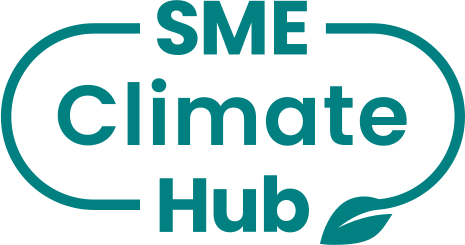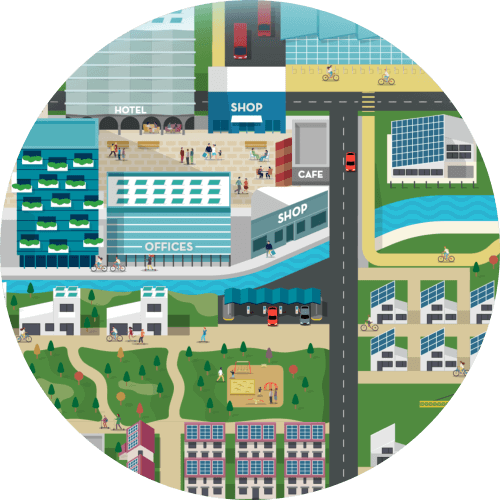Descubre los pasos que puede seguir tu empresa hacia un futuro más sostenible con nuestros recursos gratuitos.
Fluvio's Climate Report
Introduction *
Commitment and Targets *
Own Emissions *
Value Chain Emissions *
(optional)Results, Challenges and Outlook *
Introduction *
1.1 Reporting year
*2024
1.1.1 Reporting period
*from 4.2024 to 3.2025
1.2 Describe your business activities
*1.4 Number of employees in the reporting year
*1.4.1 Full-time equivalent (FTE) or headcounts
*1.5 Let us know if your company is a parent company or subsidiary
*Commitment and Targets *
2.1 Net zero target year
*2.1.1 Base year
*2.2 Near-term target
*50% of intensity total emission reduction from my base year by 2030
2.3 Provide any additional comments or context on your net zero and near term targets.
*Own Emissions *
3.1 To reduce emissions in line with my commitment, my company has a plan and is taking action
*Energy consumption
3.2 Total energy consumption
*3.3 Renewable energy
*Scope 1 emissions
3.4 Scope 1 emissions
*Scope 2 emissions
3.5 Location based scope 2 emissions
*3.7 Describe your plans and actions taken to reduce scope 1 & 2 emissions.
*3.8 Describe the calculation methodology and comment on the data accuracy, including any tools/methods used to calculate.
*Value Chain Emissions (optional) *
Scope 3 emissions
4.1 Have you measured any of your scope 3 emissions?
*4.1.1 Total scope 3 emissions
*Supply chain related - upstream emissions
4.1.2 Purchased goods and services
*4.1.3 Capital goods
*4.1.4 Fuel and energy related activities
*4.1.7 Business travel
*4.1.8 Employee commuting
*Customer related - downstream emissions
4.1.17 Do you have a plan and are taking action to reduce emissions from your value chain?
*Yes
4.2 Have you asked any of your suppliers to set a net zero target (either voluntarily or as a requirement)?
*4.2.1 What percentage of your suppliers have you asked?
*4.3 Have you communicated your commitment and actions to any of your customers?
*4.4 Describe the calculation methodology and comment on the data accuracy and any tools used to calculate your scope 3 emissions.
*Results, Challenges and Outlook *
7.1 Provide any additional comments or context on your annual results and progress from previous years.
*7.2 Do you face any key challenges in reducing emissions?
*Complexities in managing supply chain emissions
7.3 Has there been any third party validation of the data submitted in this report?
*No

Fluvio's Climate Report
Fluvio's Climate Report - 2024
Introduction *
1.1 Reporting year
*2024
1.1.1 Reporting period
*from 4.2024 to 3.2025
1.2 Describe your business activities
*1.4 Number of employees in the reporting year
*1.4.1 Full-time equivalent (FTE) or headcounts
*1.5 Let us know if your company is a parent company or subsidiary
*Commitment and Targets *
2.1 Net zero target year
*2.1.1 Base year
*2.2 Near-term target
*50% of intensity total emission reduction from my base year by 2030
2.3 Provide any additional comments or context on your net zero and near term targets.
*Own Emissions *
3.1 To reduce emissions in line with my commitment, my company has a plan and is taking action
*Energy consumption
3.2 Total energy consumption
*3.3 Renewable energy
*Scope 1 emissions
3.4 Scope 1 emissions
*Scope 2 emissions
3.5 Location based scope 2 emissions
*3.7 Describe your plans and actions taken to reduce scope 1 & 2 emissions.
*3.8 Describe the calculation methodology and comment on the data accuracy, including any tools/methods used to calculate.
*Value Chain Emissions (optional) *
Scope 3 emissions
4.1 Have you measured any of your scope 3 emissions?
*4.1.1 Total scope 3 emissions
*Supply chain related - upstream emissions
4.1.2 Purchased goods and services
*4.1.3 Capital goods
*4.1.4 Fuel and energy related activities
*4.1.7 Business travel
*4.1.8 Employee commuting
*Customer related - downstream emissions
4.1.17 Do you have a plan and are taking action to reduce emissions from your value chain?
*Yes
4.2 Have you asked any of your suppliers to set a net zero target (either voluntarily or as a requirement)?
*4.2.1 What percentage of your suppliers have you asked?
*4.3 Have you communicated your commitment and actions to any of your customers?
*4.4 Describe the calculation methodology and comment on the data accuracy and any tools used to calculate your scope 3 emissions.
*Results, Challenges and Outlook *
7.1 Provide any additional comments or context on your annual results and progress from previous years.
*7.2 Do you face any key challenges in reducing emissions?
*Complexities in managing supply chain emissions
7.3 Has there been any third party validation of the data submitted in this report?
*No
Not sure how to start?
See the steps you can take and get help building a plan to cut your business emissions today.
¿No estás seguro de por dónde empezar?
Revisa los pasos que puedes dar y obtén ayuda para elaborar un plan para reducir las emisiones de tu empresa hoy mismo.
لست متأكداً كيف تبدأ؟
اطلع على الخطوات التي يمكنك اتخاذها واحصل على المساعدة في وضع خطة لخفض انبعاثات شركتك اليوم.
Vous ne savez pas par où commencer ?
Découvrez les mesures que vous pouvez prendre et obtenez de l’aide pour élaborer un plan pour réduire les émissions de votre entreprise dès aujourd’hui.
Ready to commit to lower emissions?
It’s easy to make the commitment. Just complete a form sharing your intent to reduce your emissions.
You’ll earn public recognition for taking the first step.
¿Listo para comprometerte a reducir tus emisiones?
Es fácil comprometerse. Solo tienes que completar un formulario compartiendo tu intención de reducir tus emisiones.
Ganarás reconocimiento público por tomar este primer paso.
هل أنت مستعد للالتزام بتقليل الانبعاثات؟
الالتزام سهل. ما عليك سوى تعبئة نموذج لمشاركة عزمك على تقليل انبعاثاتك.
سوف تحظى باعتراف عام باتخاذك الخطوة الأولى.
Prêt à vous engager pour réduire les émissions ?
S’engager est simple. Il suffit de remplir un formulaire indiquant votre intention de réduire vos émissions.
Vous gagnerez une reconnaissance publique pour avoir fait le premier pas.
Register now to use our tools
Register now to use our tools

¡Mantente actualizado!
Regístrate en nuestro boletín para mantenerte al día con los últimos avances sobre el clima.
Acceder
Don't have an account? Create account to access our tools or make the SME Climate Commitment
Acceder
Don't have an account? Create account to access our tools or make the SME Climate Commitment
Acceder
Don't have an account? Create account to access our tools or make the SME Climate Commitment
¿Has olvidado tu contraseña?
Please enter your email address. You will receive a link to create a new password via email.

 Volver atrás
Volver atrás

